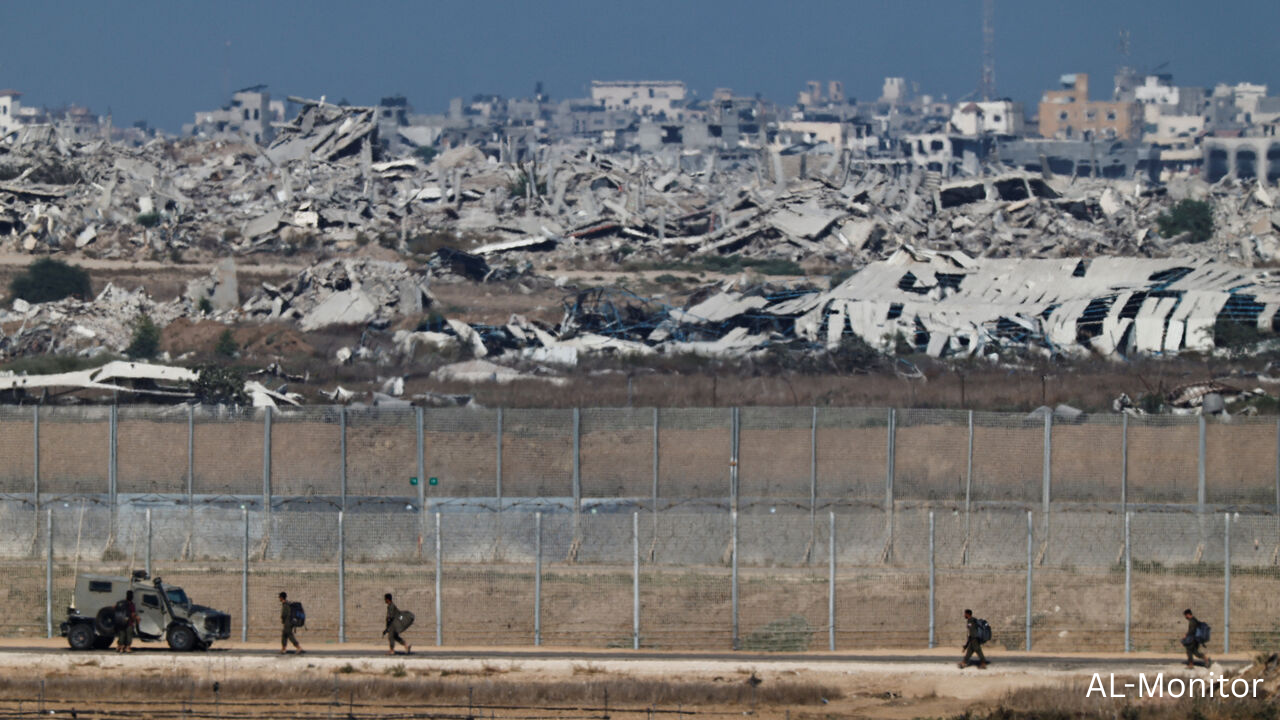As former President Donald Trump pushed forward his plan to end the ongoing conflict in Gaza, Hamas found itself navigating a difficult and high-stakes political landscape. The group, responsible for orchestrating attacks on Israel in October 2023, faced mounting international and regional pressure to accept the proposal while balancing internal divisions within its leadership. The 20-point plan, which calls for the release of all Israeli hostages, Hamas disarmament, and a phased withdrawal of Israeli forces, has forced Hamas to carefully evaluate its position, knowing that the decision could shape the future of both Gaza and its own political survival.
Hamas’s Deliberation Process
Mohammad Nazzal, a senior political figure within Hamas, told Al Jazeera that the group was reviewing Trump’s plan with “seriousness” but would not accept being told to “take it or leave it.” He explained that Hamas was conferring with other Palestinian factions and would announce its stance soon. Nazzal highlighted that the group had specific “comments” and was exploring “gray areas” of the plan that it could work with, signaling that Hamas was attempting to find a compromise while maintaining its strategic objectives.
Regional mediators from Qatar, Egypt, and Turkey engaged with Hamas negotiators to discuss the proposal, offering guidance and attempting to secure a response that could de-escalate the nearly two-year-old conflict. The outcome of these deliberations could have immediate consequences for the war’s trajectory, the safety of Palestinian civilians in Gaza, and the Israeli hostages who have been held captive for nearly two years.
Trump’s Deadline and Pressure Tactics
The urgency for Hamas to respond increased dramatically after Trump posted on social media that a decision must be reached by Sunday at 6 p.m. Eastern Standard Time, warning that “all HELL” would “break out against Hamas” if the group failed to comply. This aggressive timetable underscored Trump’s determination to see progress in the negotiations and placed Hamas under immense pressure from both regional and international actors.
Israel, meanwhile, fully backed the plan. Prime Minister Benjamin Netanyahu warned that if Hamas did not accept the proposal, Israel would continue its military campaign in Gaza and “finish the job by itself.” This hardline stance intensified Hamas’s dilemma, forcing the group to weigh potential political survival against continued conflict.
Internal Divisions Within Hamas
Hamas is not monolithic. Analysts point out that the organization includes both moderate and hard-line factions, which complicates decision-making. Some leaders, particularly those with ideological ties to the group’s militant past, view accepting the Trump plan as political suicide that could undermine the Palestinian cause.
Belal Rayan, the son of a hard-line Hamas leader killed by Israel in 2009, posted on social media that “accepting the ‘Trump’ plan means political suicide that will destroy the Palestinian cause.” Similarly, Abdel Jabbar Saeed, a Hamas official based in Qatar, emphasized that the group’s resistance would continue until their people’s objectives are achieved, signaling reluctance among certain factions to yield to the proposed terms.
Yet, other analysts argue that Hamas’s leadership may pragmatically accept the fundamental elements of the plan, such as the release of hostages and cessation of Israeli attacks, as a way to preserve its organization and limit further civilian casualties.
Strategic Considerations and Political Risk
Palestinian analyst Esmat Mansour, who spent years in Israeli prisons with Hamas leaders, explained that the group faces a difficult strategic calculus. “Rejecting the plan will make it look like it is justifying the continuation of the war,” he said. “Accepting it will be tantamount to signing on to its demise.”
Hamas may attempt to negotiate a timeline for Israel’s withdrawal and ensure guarantees for Palestinian autonomy in Gaza as part of any agreement. Analysts suggest that the group’s leadership could choose to “climb down the tree” by accepting a deal that maintains some measure of political influence while averting total collapse. The decision would reflect Hamas’s recognition that continued resistance, in the face of overwhelming international pressure, may no longer be sustainable.
Implications for Civilians and Hostages
The stakes extend far beyond politics. Accepting Trump’s plan could bring an immediate end to hostilities, potentially saving lives and allowing the safe return of Israeli hostages. Conversely, failure to reach an agreement could prolong the conflict, perpetuating the humanitarian crisis in Gaza and maintaining the peril faced by both civilians and captives.
The outcome of Hamas’s decision is closely watched by regional mediators, world leaders, and international observers, all of whom hope for a resolution that prevents further escalation. The group’s response could reshape the geopolitical landscape, testing the effectiveness of U.S.-led diplomacy in the region.
Conclusion
Hamas’s deliberation over President Trump’s peace plan highlights the complexity of peacemaking in the Gaza conflict. The group faces internal divisions, immense external pressure, and the weight of nearly two years of war on its shoulders. While rejecting the plan risks prolonged conflict and international condemnation, acceptance could signal a strategic pivot toward pragmatic diplomacy, potentially paving the way for hostages’ release and a reduction in hostilities.
As deadlines loom and regional mediators work to bridge gaps, the coming days will be critical in determining whether a fragile path to peace in Gaza can be realized.




